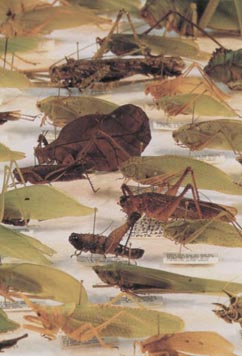
Half a world away in a lab in cold, blustery Oxford, England, Paul Rainey, a geneticisit, is tackling that very issue - the rise of life's variety.
Botanists have long marvelled at the variety of plants packed along the southwestern edge of the tip of Africa. Proteas, leathery-leaved shrubs with flowers the size of soup bowls, heatherlike ericas, irises, orchids and succulents all vie for a place in the sun.
To explain how this mosaic of greeney has come about, botanists John Manning and Peter Goldblatt lead the way through low clumps of stiff, spiky-leaved plants that cover sandstone, shale and limestone souls of South Africa's cape region. Although much of the flora looks alike - tiggy shrubs with tiny, dark green leaves- the botanists note that almost every plant we stop to inspect is a distinct species from a different genus and family. Indeed the plants make up that make up the fynbos, as ths unique type of vegetation is collectively known, are among the most diverse in the world. Because botanists find new species here every year, that tally of diversity keeps growing.
The cape's 35,000 square miles harbor nearly 9,000 species of plants; California, four times that size, is home to only 5,500. Its those kinds of discrepancies that scientists like Manning and Goldblatt are trying to understand. Why in some parts of the world, such as the cape and the Ecuadorian rainforest, is there such an extraordinary exhuberance of life?
"The cape is extra rich for a temperate zone," says Goldblatt, a researcher with a sunny disposition from the Missouri Botanical Garden who spends several months each year studying the area's fynbos in an attempt to answer that question. "Usually you associate this kind of diversity with the wet tropics. Here we think it comes about because of te number of microhabitats that we have," he says, citing the variety of soils, the sudden rise in elevation from coastal plain to mountaintop, the variable rainfall, and sporadic fires. In short, the fynbos- like the Ecuadorian rain forest- is Rainey's test tube writ large.
Taken from National Geographic Magazine, February 1999.